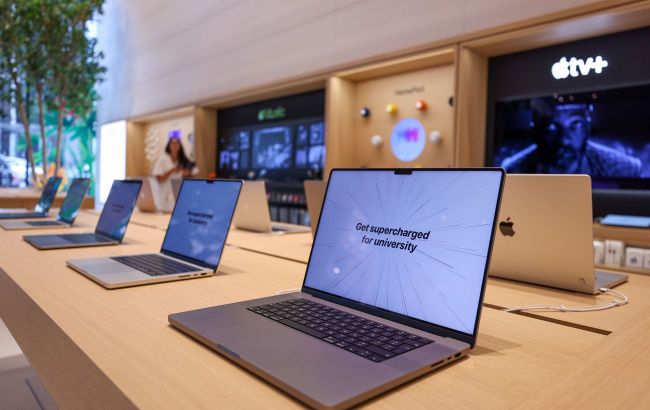Apple's major redesign - 5 reasons to wait for MacBook Pro in 2026
 5 reasons why you should postpone buying a MacBook Pro until next year (photo: Getty Images)
5 reasons why you should postpone buying a MacBook Pro until next year (photo: Getty Images)
Apple always strives to surprise users with the technologies of the future, and 2026 will be no exception. According to MacRumors, the company is preparing a major redesign of the MacBook Pro, which will make the laptop even more powerful, thinner, and more functional.
OLED screen
According to several rumors, the first MacBook Pro models with OLED screens will appear in 2026. Research firm Omdia claims that Apple is "highly likely" to introduce new MacBook Pros with OLED displays next year.
Analyst Ross Young also said that Apple's supply chain will be ready to provide enough OLED screens optimized for laptops by 2026.
Compared to the current mini-LED MacBook Pro models, OLED technology will offer advantages such as increased brightness, higher contrast ratio with deeper blacks, improved energy efficiency and, as a result, longer battery life.
Thinner and lighter
The move to OLED displays could allow Apple to make future MacBook Pro models thinner, and rumors confirm that the company is planning to do just that. When the iPad Pro with M4 processor was introduced in May 2024, Apple called it the thinnest device in the company's history.
Later, Bloomberg's Mark Gurman noted that this iPad Pro is "the beginning of a new class of Apple devices" and added that the company is working on making the MacBook Pro thinner over the "next few years."
Apple reportedly aims to create the thinnest laptop possible without sacrificing battery life and key features.
Interestingly, the MacBook Pro has gotten thicker and heavier since its last redesign in 2021, when Apple brought back many ports that were removed in previous versions to reduce the thickness of the case.
How Apple will be able to make the 2026 MacBook Pro thinner without sacrificing the functionality it recently restored remains a major question.
Camera with a hole in the screen
According to a roadmap presented by research company Omdia, Apple plans to remove the notch from the MacBook Pro in 2026.
Next year's 14-inch and 16-inch MacBook Pro models are expected to feature a punch-hole camera instead of the usual notch. This will allow for more visible pixels on the display and create a more cohesive and continuous screen design.
5G modem
In early 2025, Apple plans to introduce its own 5G chip, which has been under development for several years. This modem will be added to the iPhone SE, low-cost iPad, and iPhone 17 "Air" to test the technology before it is introduced to flagship devices.
According to Bloomberg's Mark Gurman, Apple will then consider adding cellular support to the Mac lineup. The company is reportedly "exploring" the option of installing a second-generation 5G modem in future Mac models as early as 2026, which could lead to the release of a MacBook Pro with cellular support.
Apple's first chip will only support sub-6GHz 5G frequencies, but the second generation of the modem will be compatible with faster mmWave technologies, according to Gurman.
M6 series chip
If Apple maintains its usual update schedule, the MacBook Pro lineup will receive M5 series chips as early as October this year. These chips will be produced using TSMC's third-generation 3nm process, known as N3P, which will provide typical annual improvements in performance and energy efficiency compared to the M4 series.
The M6 chips that may appear in the 2026 MacBook Pro may be made using a completely new packaging method.
According to one rumor, in the A20 chip for the iPhone 18, which will be released next year, Apple will replace the old InFo (Integrated Fan-Out) packaging with a new WMCM (Wafer-Level Multi-Chip Module). This technology makes it possible to combine several chips in a single module, which opens up the possibility of creating more complex processors.
Thus, components such as CPU, GPU, RAM, and neural processor will become even more integrated.
Although there is no exact information yet, there is a possibility that Apple will develop the M6 based on the 2-nm process, while using WMCM packaging to create even more powerful processors of its own design.

